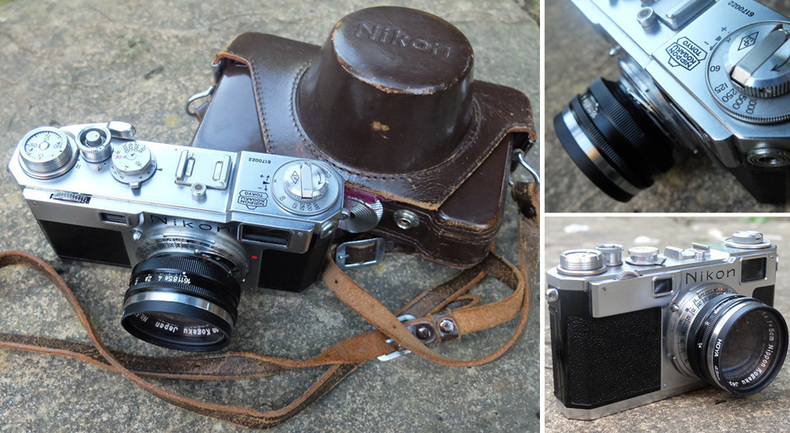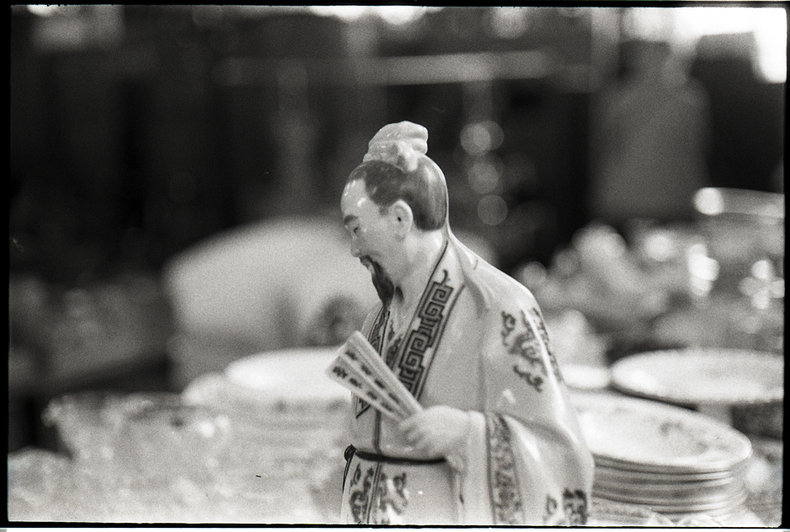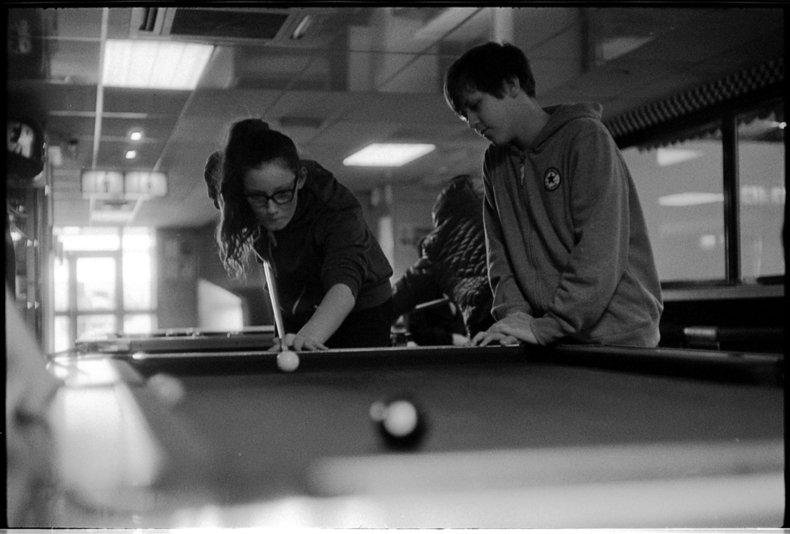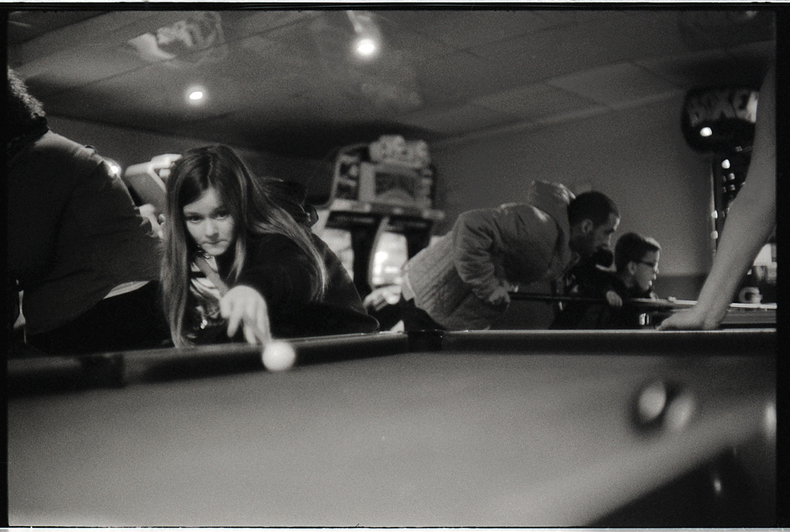
This the Nikon S3, a 35mm rangefinder camera dating from the late 50s. Nippon Kogaku had been making optical equipment since 1917, but only started making consumer cameras in 1948. Nikon's most famous rival, Canon, had been making a 35mm rangefinder since 1933. Whilst Canon's models were essentially Leica knock-offs, Nikon had ambitions to produce something new. This is a quote from Nikon's website:
The design specifications of the small-size camera needed to introduce the advantages of the "Leica" and "Contax" models. These models were dividing the world of photography as the highest-class models available. However, the camera could not be a duplicate of either of the two.
This doesn't quite tie in with what Gerry had always told me: that Canon copied Leica and Nikon copied Contax. So, I dug out a Contax and compared the two:
Not an exact copy, but the resemblance is clear. Not as unique as Nikon had perhaps hoped.
Really, this is what Nikon has always done: rather than make something earth-shatteringly new, and suffer the inevitable teething troubles, they take existing technology and make it work. And not just work; Nikon make it work well and, crucially, they make it work reliably.
I'm a big fan of Nikon's mechanical SLRs, in part for their robustness and usability, but also aesthetically - they have the sort of rugged beauty which only comes of form following function. For similar aesthetic reasons, I've always liked the look of the Nikon rangefinders, but until now I'd never used one.
Gerry was, as he would say, 'more of a Canon man', so there are only a few Nikons in the collection. All of them seem to be in really good condition, so this was probably his reason for buying them - he couldn't resist a decent example of any camera if the price was right. This S3 looks like it's hardly ever been out of its case. It's got a 50mm f1.4 on it, so a good fast lens for low light stuff. I thought it would be interesting to try shooting indoors with it a bit, so went first to an auction house in Perth. I'm trying to pluck up more courage when photographing people and thought this might be a good spot for it. However, I still had to hide behind some chairs to get this shot:

I like the contrasting light levels in the image, although I think it would have been a better photo with just one person in view. Like in this next one, where the bloke didn't seem to mind me photographing him at all...

It's a great camera to use - a nice clear rangefinder, well placed controls - and makes a fantastic noise. It's a bit clattery, but it's somehow a precise clatter. I realise I'm becoming a little obsessed with the sounds of these old cameras. It must be some nostalgic hankering for things lost to digital - a bit like people who become wistful about the crackling of vinyl records (and those people would include me).
Whilst in Scotland I took the kids out for a game of pool with their cousins. I brought the Nikon along, and although the varying lighting in the room made things a little tricky, I was surprised that there was generally enough light for shooting at 1/30th sec. In between getting in the way - and generally embarrassing the children - I managed to get a few half-decent images:



I'm particularly pleased with this last one. The lighting and composition has worked out well, but I also like the look of determined concentration on Katharine's face.

For a camera that's knocking on sixty years old, the S3 feels almost modern. I found it really easy to use, which meant I got better shots . It just works, and doesn't get in the way of what you're doing, which is what a good camera should be like. With cameras like this one, it's easy to see why Nikon made such a big impact on the professional market in the fifties. What's surprising is that they only made rangefinders for such a short period. By 1959, a mere eleven years after making their first rangefinder, Nikon was winding down production to concentrate on the growing SLR market which, as it turned out, went rather well for them...

